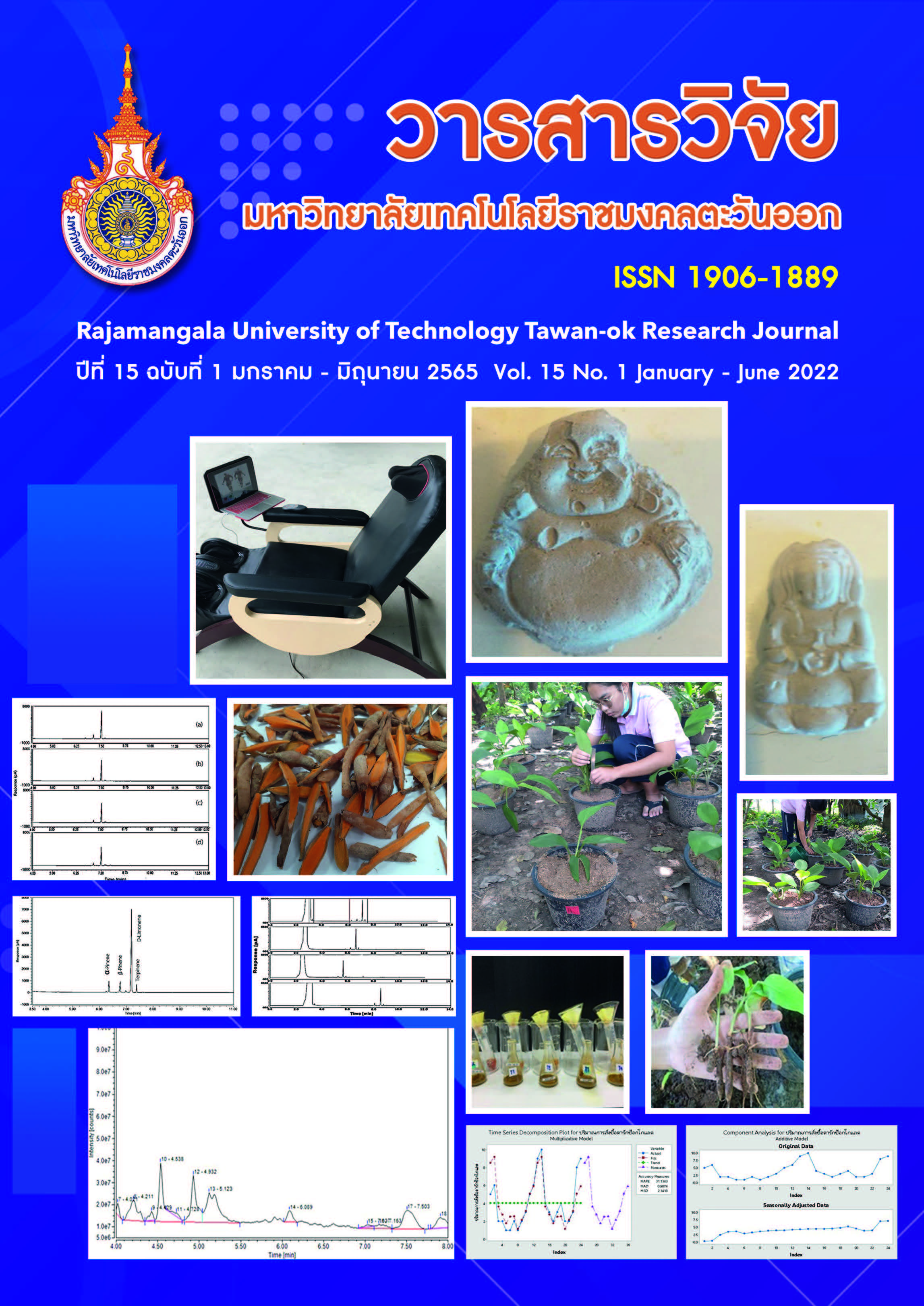A Study of Natural Compound Materials Created with an Ancient Recipe for Community Product Development
Main Article Content
Abstract
Nowadays, forming interior and exterior building materials has directly and indirectly caused global warming. Such a problem is resulted from forming materials, particularly, chemical compounds, such as Gypsum Compound of cement. The compound is hard to decompose and can lead to negative impacts on soil, which is eventually resulted in weak plants. Local wisdom, which tends to gradually diminish its role even though it has been developed since the past, is probably a solution to the problem. Chedis established at Wat Chang Lom, Sukhothai Province. This research study is an empirical research, which aimed to test the endurance of a material by means of a pressure testing machine. The material was formed by blending mature shells together with three compounds: Tung oil, honey, and steamed sugar cane juice, in a proper proportion. Then, the material was pressed in a mold which was 5 cm wide, 5 cm long, and 5 cm high. After that, it was dried in a normal temperature and tested with the pressure testing machine, in three periods of time, namely, on the 7th day, the 14th day, and the 28th day. It was found that the material based on mature shells and a Tung oil compound was so endure that it could be removed from the mold on the 14th day. When it was retested on the 28th day, it was found that the material could bear the pressure of 16 kilonewtons or 1631.55 kilograms/a square inch. However, the material based on plaster could bear the pressure of 2 kilonewtons or 203.94 kilograms/a square inch. From the research results, it can be concluded that natural compounds can be used to form materials to create a community product, which does not require much endurance. The compound can replace the use of scientific mortar produced by industrial factories. Also, when a particular product cannot be used anymore, it is easy to destroy it. This can lead to natural decomposition, and that is why such a natural compound created with the ancient recipe is environment friendly.
Article Details

This work is licensed under a Creative Commons Attribution-NonCommercial-NoDerivatives 4.0 International License.
References
Chovichern, V. 1996. Concrete technology. Sampanpanith printing, Bangkok. (in Thai)
Graduate School of Silpakorn University. 2002. Analysis of shell mortar at Wangphai archeology site, n.p., Bangkok. (in Thai)
Graduate School of Silpakorn University. 2006. Commercial buddha: amulet. n.p., (in Thai)
Kanchanawarong, U. 2002. Material testing. Siam sport sindicade, Bangkok. (in Thai)
Office of Permanent Secretary, Ministry of Education. 2016. Teaching books for the emperor of amulets. Office for the promotion of non-formal education and informal education, Bangkok. (in Thai)
Sankvalpech, N. 2015. Study material and technic plastering by technician Phetchaburi, n.p., (in Thai)
Thai Industrial Standards Institute. 2004. Tis. 409-2525 method for testing the compressive of stick concrete, n.p., Ministry of Industry. (in Thai)
Tresuwan, S. 1986. Construction and material properties mechanical behavior, volume 2. Physics center printing, Bangkok


